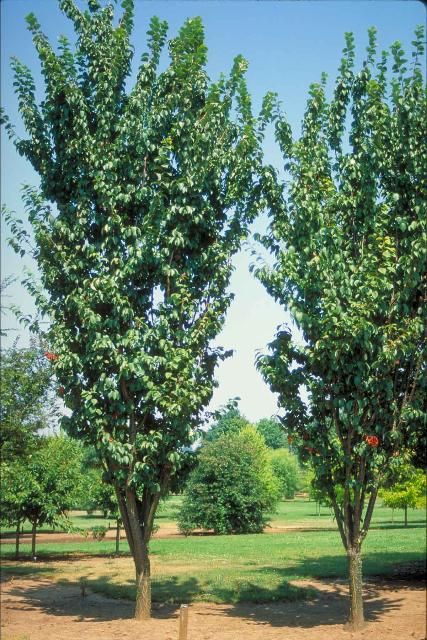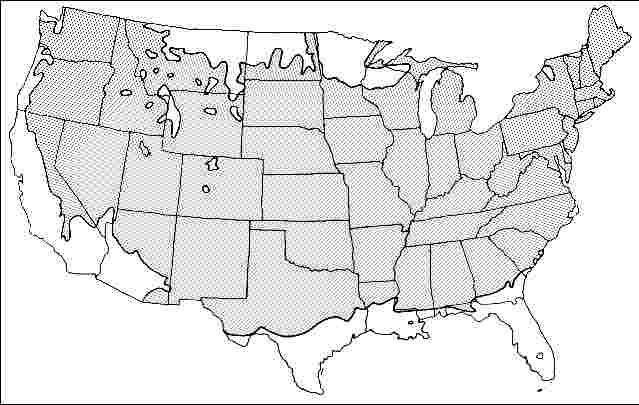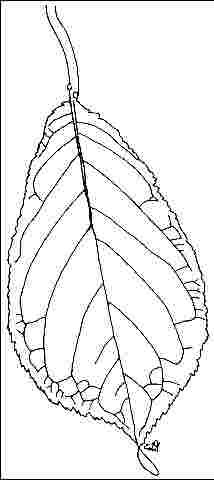Introduction
With attractive bark, good fall foliage color, and delicate pink blooms, Columnar Sargent Cherry is highly recommended for the home and urban landscape. Growing at a moderate rate into a 25 to 35-foot-high and 15 feet wide, upright to vase shaped tree, Sargent Cherry makes an ideal street tree casting moderate shade below. It is often grown with several multiple trunks or upright branches originating from the same position on the trunk ascending in a graceful fashion. This structure could be somewhat of a problem in ice-storms. Training to develop well-spaced branches along the trunk may help reduce this problem. The attractive cinnamon brown bark has a shiny, almost polished appearance with prominent lenticels arranged around the trunk. In late April or early May the one-inch-wide, pink to deep pink single blooms appear before the new red-tinged leaves unfold. The small, pea-sized fruits which follow are red, ripening to a dark purple in June and July. The fruits are considered inconspicuous due to their size and color but are easily found by birds who quickly devour them. The three to five-inch-long, shiny, dark green leaves take on various shades of orange, bronze, and red before dropping in late September, often well before other trees which are still green.

Credit: Ed Gilman
General Information
Scientific name: Prunus sargentii
Pronunciation: PROO-nus sar-JEN-tee-eye
Common name(s): Columnar Sargent Cherry
Family: Rosaceae
USDA hardiness zones: 4A through 8A (Fig. 2)
Origin: not native to North America
Invasive potential: little invasive potential
Uses: street without sidewalk; specimen; tree lawn 3-4 feet wide; tree lawn 4-6 feet wide; tree lawn > 6 ft wide; highway median; Bonsai
Availability: somewhat available, may have to go out of the region to find the tree

Description
Height: 25 to 35 feet
Spread: 15 to 20 feet
Crown uniformity: symmetrical
Crown shape: columnar, upright/erect, vase
Crown density: dense
Growth rate: moderate
Texture: medium
Foliage
Leaf arrangement: alternate (Fig. 3)
Leaf type: simple
Leaf margin: serrate
Leaf shape: elliptic (oval), obovate
Leaf venation: pinnate, brachidodrome
Leaf type and persistence: deciduous
Leaf blade length: 2 to 4 inches, 4 to 8 inches
Leaf color: green
Fall color: yellow, red, copper
Fall characteristic: showy

Flower
Flower color: pink
Flower characteristics: showy
Fruit
Fruit shape: oval
Fruit length: less than .5 inch
Fruit covering: fleshy
Fruit color: purple, black, red
Fruit characteristics: attracts birds; not showy; fruit/leaves not a litter problem
Trunk and Branches
Trunk/bark/branches: branches don't droop; showy; typically multi-trunked; thorns
Pruning requirement: needed for strong structure
Breakage: susceptible to breakage
Current year twig color: reddish, brown
Current year twig thickness: medium
Wood specific gravity: unknown
Culture
Light requirement: full sun
Soil tolerances: sand; loam; clay; acidic; slightly alkaline; well-drained
Drought tolerance: high
Aerosol salt tolerance: moderate
Other
Roots: not a problem
Winter interest: no
Outstanding tree: yes
Ozone sensitivity: unknown
Verticillium wilt susceptibility: susceptible
Pest resistance: resistant to pests/diseases
Use and Management
Sargent Cherry works well as a street tree (probably the best of the cherries for street planting) in areas which require a narrow crowned tree. It can be planted along the entry road to a subdivision or commercial landscape on 15 to 20-foot-centers or in the tree lawn space between the curb and sidewalk. It is also very effective as a specimen in the lawn or landscape bed.
Sargent Cherry should be grown in full sun on very well-drained, acid soil. Although it grows moderately fast and can reach up to 60 feet tall in the wild, Sargent Cherry is relatively short-lived with a 20-year lifespan, but provides reliable service during this period. It requires little maintenance once established and is quite tolerant of drought and clay soil.
Propagation is by grafting or budding.
Pests and Diseases
It is bothered by tent caterpillars, aphids, borers, and scales.